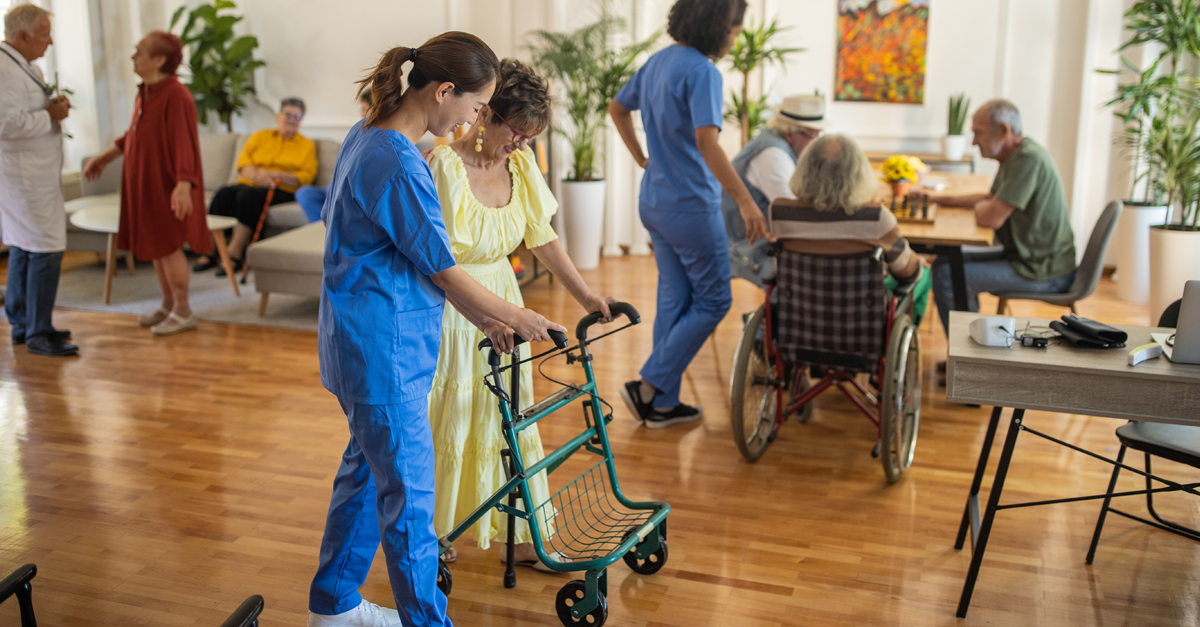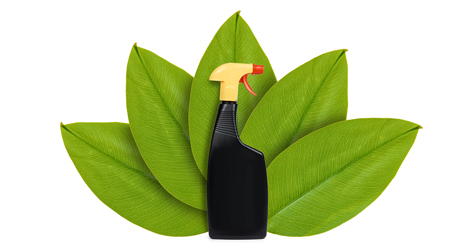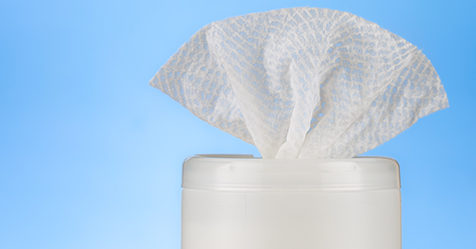As 2025 continues to unfold, infection prevention remains a top priority for senior care facilities. In recent years, the importance of rigorous cleaning and disinfection protocols has been reinforced in protecting vulnerable populations from pathogens such as influenza, norovirus, and emerging infectious diseases. However, many facilities are now rethinking their approach—seeking solutions that not only protect residents and staff but also prioritize sustainability, safety, and efficacy. One of the most promising innovations gaining traction is the use of electrolyzed water for cleaning and disinfection.
A smarter, safer approach to disinfection
Senior living communities house residents who are often more vulnerable to health complications due to weakened immune systems, respiratory conditions, or chronic illnesses. Traditional chemical-based disinfectants can exacerbate these conditions, leading to increased respiratory distress, skin irritation, and allergic reactions. Moreover, seniors are more likely to experience adverse effects from prolonged exposure to volatile organic compounds (VOCs) and other harsh chemicals found in conventional cleaning solutions. By adopting nontoxic alternatives such as electrolyzed water, facilities can significantly reduce these risks while maintaining a high standard of cleanliness and infection prevention.
Traditional cleaning chemicals often introduce risks to indoor air quality, resident health, and environmental sustainability. Harsh disinfectants and their chemical residues can accumulate on surfaces, creating potential hazards in enclosed environments like senior living communities. A clean environment is everyone’s goal—but achieving it strategically, in a way that minimizes collateral damage, is the next level of facility maintenance.
What is electrolyzed water?
Electrolyzed water (e-water) is a scientifically proven, eco-friendly alternative to traditional chemical-based disinfectants and cleaners. It is produced through an electrochemical process that passes an electric current through a saltwater solution, generating two powerful yet safe compounds:
- Hypochlorous acid (HOCl): a highly effective disinfectant capable of eliminating bacteria, viruses, and fungi while being gentle on skin and surfaces.
- Sodium hydroxide (NaOH): a mild cleaning agent that helps break down grease and organic matter, replacing conventional chemical-based detergents.
In recent years, electrolyzed water has gained widespread recognition in the cleaning industry for its ability to provide disinfection without harmful side effects. With increasing demand for green cleaning solutions, e-water is being embraced by senior care facilities as a means to enhance infection control while minimizing risks to residents and staff.
Proven efficacy and safety
Electrolyzed water is supported by extensive research demonstrating its effectiveness as a disinfectant. HOCI can significantly reduce bacterial load in medical applications, such as in blepharitis treatment, where it achieved a greater than 99% reduction in staphylococcal bacteria on the skin.
From a safety standpoint, electrolyzed water is nontoxic, nonirritating, and free from VOCs. It poses no respiratory risks, making it ideal for environments where residents may have chronic respiratory conditions or heightened sensitivities.
Sustainability and cost savings
The shift to nontoxic disinfection solutions like electrolyzed water is about more than health and safety—it also plays a crucial role in sustainability and cost efficiency. Traditional chemical disinfectants contribute to pollution, waste, and greenhouse gas emissions through their production, packaging, and transportation. In contrast, electrolyzed water is generated on-site, eliminating the need for plastic containers, reducing hazardous waste disposal, and significantly lowering a facility’s carbon footprint.
By reducing reliance on single-use plastics and minimizing the environmental impact of chemical runoff, senior care facilities contribute to a cleaner, healthier planet. Additionally, because electrolyzed water is made using only salt, water, and electricity, facilities no longer need to stockpile multiple cleaning products, reducing storage needs and simplifying inventory management.
From a financial perspective, the adoption of electrolyzed water can lead to substantial cost savings. Facilities can cut expenses associated with purchasing, shipping, and storing conventional chemical disinfectants. On-site generation systems provide a steady and reliable supply of cleaning and disinfecting solution, decreasing dependency on supply chains that may be subject to price fluctuations and shortages. Over time, these savings add up, allowing senior care facilities to reinvest in other critical areas such as patient care, staff training, and facility improvements.
On-site generated electrolyzed water aligns perfectly with sustainability goals:
- Eliminates single-use plastics by replacing packaged chemical disinfectants.
- Decreases chemical waste by producing only what is needed, reducing hazardous waste disposal.
- Reduces carbon footprint by eliminating transportation-related emissions from traditional cleaning chemicals.
By replacing multiple chemical products with a single, versatile solution, senior care facilities can streamline their inventory and reduce supply chain dependencies.
Implementing electrolyzed water in senior care facilities
To successfully transition to electrolyzed water disinfection in 2025, senior care facilities should consider the following steps:
- Evaluate current cleaning protocols: Identify opportunities to replace conventional disinfectants with HOCl-based solutions.
- Invest in on-site generation systems: Partner with reputable providers to install user-friendly electrolyzed water systems tailored to facility needs.
- Train staff on best practices: Educate housekeeping and environmental services teams on proper application techniques to maximize effectiveness.
- Monitor and measure results: Track infection rates, cleaning efficiency, and cost savings to assess the impact of the transition.
A healthier, greener future for senior care
As senior care facilities plan for 2025 and beyond, embracing nontoxic, sustainable disinfection methods like electrolyzed water is a forward-thinking strategy. By prioritizing resident safety, reducing environmental impact, and enhancing operational efficiency, facility managers can lead the way in redefining best practices for infection prevention.
Now is the time to make the shift—ensuring that senior care environments remain safe, healthy, and resilient for years to come.




